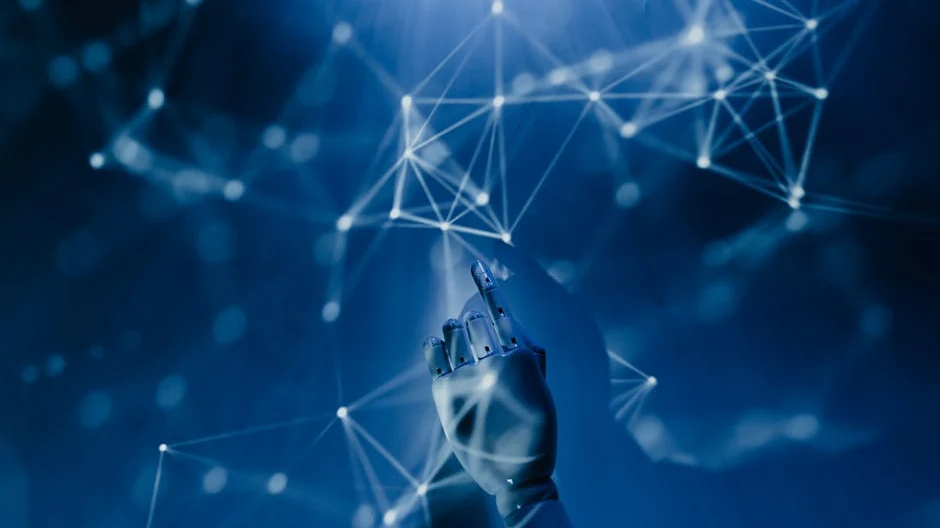Future Trends: How AI Humanizers Will Evolve in the Next Decade
Imagine receiving customer service from an AI that not only understands your frustration but responds with genuine empathy, adjusting its tone based on your emotional state. This isn’t science fiction—it’s the rapidly approaching reality of AI humanizers. As we stand at the threshold of a technological revolution, AI humanizers are poised to transform how we interact with artificial intelligence, making these interactions feel remarkably human.
The next decade promises unprecedented advances in AI humanization technology, fundamentally changing everything from customer service to creative industries. But what exactly does this evolution look like, and how will it impact our daily lives?
Understanding AI Humanizers: The Foundation
Before diving into future trends, it’s crucial to understand what AI humanizers actually do. These sophisticated tools transform robotic, mechanical AI outputs into natural, conversational content that feels authentically human. Think of them as digital translators that convert algorithmic language into something that resonates with human emotions and communication patterns.
Currently, AI humanizers focus primarily on text transformation, helping businesses create more engaging content and improving user experiences across digital platforms. However, this is just the beginning of their potential.
Emotional Intelligence Integration
The most significant trend emerging in AI humanization is the integration of emotional intelligence. Within the next decade, we’ll witness AI humanizers that can:
- Detect emotional context from text, voice, and even visual cues
- Adjust communication style based on the user’s emotional state
- Provide empathetic responses that feel genuinely caring
- Learn individual emotional preferences over time
This evolution means AI interactions will become increasingly personalized and emotionally aware. For instance, an AI customer service representative might recognize when a customer is stressed and automatically adopt a more patient, reassuring tone.
Multi-Modal Humanization
Beyond Text: Voice and Visual Elements
The future of AI humanizers extends far beyond written content. We’re moving toward comprehensive multi-modal humanization that encompasses:
- Voice Synthesis: AI-generated speech that captures human nuances like hesitation, excitement, and emphasis
- Facial Expression Mapping: Digital avatars with realistic facial expressions that match emotional content
- Gesture Integration: Body language and hand movements that complement verbal communication
- Contextual Adaptation: Real-time adjustment based on environmental factors and social situations
This holistic approach will create AI interactions that feel completely natural across all sensory channels.
Industry-Specific Specialization
As AI humanizers mature, we’ll see increasing specialization across different industries. Each sector has unique communication requirements and cultural nuances that future AI humanizers will master:
Healthcare
Medical AI humanizers will develop bedside manner, providing compassionate communication while maintaining clinical accuracy. They’ll understand the delicate balance between providing information and offering emotional support.
Education
Educational AI will adapt teaching styles to individual learning preferences, incorporating encouragement, patience, and motivational techniques that human teachers use instinctively.
Creative Industries
AI humanizers in creative fields will develop artistic sensibilities, understanding cultural contexts, humor, and creative expression that resonates with specific audiences.
Ethical Framework Development
One of the most critical aspects of AI humanizer evolution involves establishing comprehensive ethical frameworks. The next decade will see the development of:
- Transparency protocols that clearly identify AI-generated content
- Consent mechanisms for AI personality modeling
- Cultural sensitivity guidelines to prevent bias and misrepresentation
- Privacy protection measures for emotional data collection
These frameworks will ensure that as AI becomes more human-like, it remains trustworthy and respectful of human values.
Real-Time Adaptation and Learning
Future AI humanizers will feature unprecedented learning capabilities, continuously improving their human-like qualities through:
Dynamic Personality Adjustment: AI systems will develop unique personalities based on user interactions, creating distinct digital identities that feel familiar and consistent.
Cultural Context Awareness: Advanced humanizers will understand and adapt to cultural nuances, regional communication styles, and generational preferences automatically.
Situational Intelligence: These systems will recognize appropriate communication styles for different contexts—formal for business meetings, casual for social interactions, and supportive for difficult conversations.
Common Misconceptions About AI Humanizer Evolution
As this technology advances, several myths persist that deserve clarification:
Myth 1: AI humanizers will completely replace human interaction. Reality: They’re designed to enhance and supplement human communication, not replace it entirely.
Myth 2: More human-like AI is always better. Reality: The goal is appropriate humanization—sometimes users prefer knowing they’re interacting with AI.
Myth 3: AI humanizers will become indistinguishable from humans. Reality: Ethical development includes maintaining transparency about AI identity.
Preparing for the AI Humanizer Revolution
As these technologies evolve, individuals and organizations should prepare by:
- Developing AI literacy to understand capabilities and limitations
- Establishing clear policies for AI interaction in professional settings
- Investing in training for human-AI collaboration
- Staying informed about ethical developments and best practices
Key Takeaways
The evolution of AI humanizers over the next decade will be transformative, touching every aspect of our digital interactions. From emotional intelligence integration to industry-specific specialization, these technologies will make AI interactions feel increasingly natural and valuable.
However, this evolution comes with responsibilities. As AI becomes more human-like, we must ensure it remains ethical, transparent, and genuinely beneficial to society. The future of AI humanizers isn’t just about better technology—it’s about creating digital experiences that enhance human connection rather than replace it.
By understanding these trends and preparing thoughtfully, we can harness the power of AI humanizers to create a future where technology truly serves humanity’s best interests while maintaining the authentic human connections that make life meaningful.
